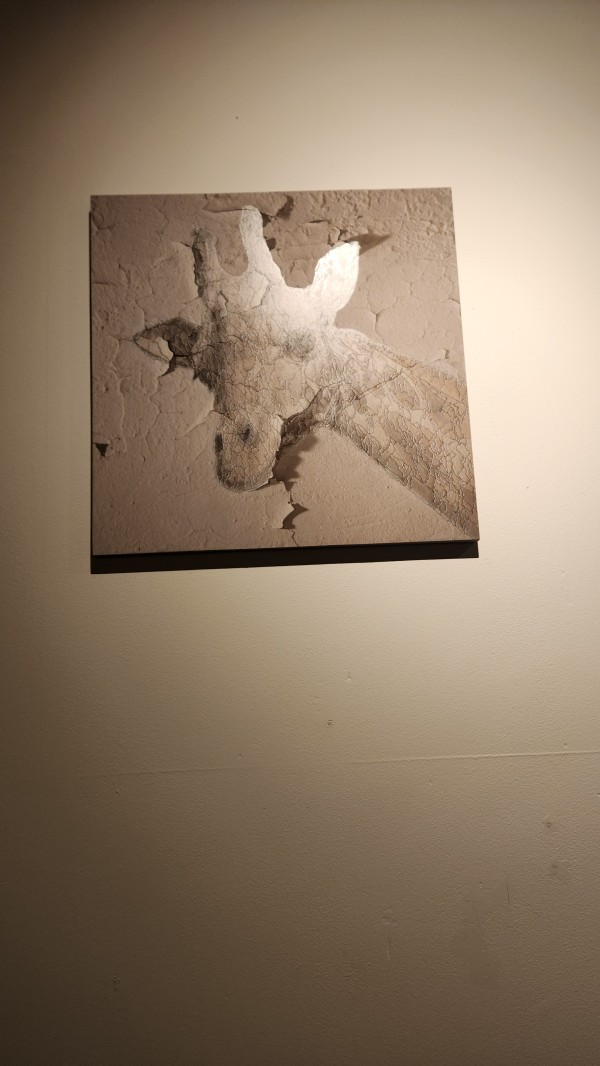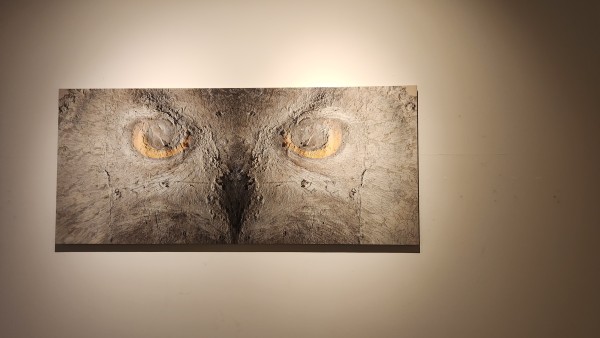
artist Sung Sang Eun 's owl work
At the Jeju Gallery in the basement of the Insa Art Center (41-1 Insadong-gil, Seoul), the special exhibition “Cantata of the Veranda Owl” opened on October 2 and runs through October 27.
The show brings together artists Park Jung-geun, Sung Sang-eun, Yang Hwa-sun, and Lee Yong-won, under the curatorial direction of Shin Sun-ho, who emphasizes the intersection of contemporary art trends and regional identity. One of the highlights comes from artist Sung Sang-eun, whose creative process began not with a deliberate plan to depict owls, but with the act of observing cracks and stains on aged walls.
Over time, she began to notice shapes resembling owls, allowing her works to evolve organically through discovery and chance rather than strict design.
Her technique involves photographing deteriorated wall surfaces, printing them, and then layering them with colored pencils and acrylics, transforming urban decay into visual poetry.
The artists collectively explore how urban aging, historical memory, and social division can be reinterpreted through art.
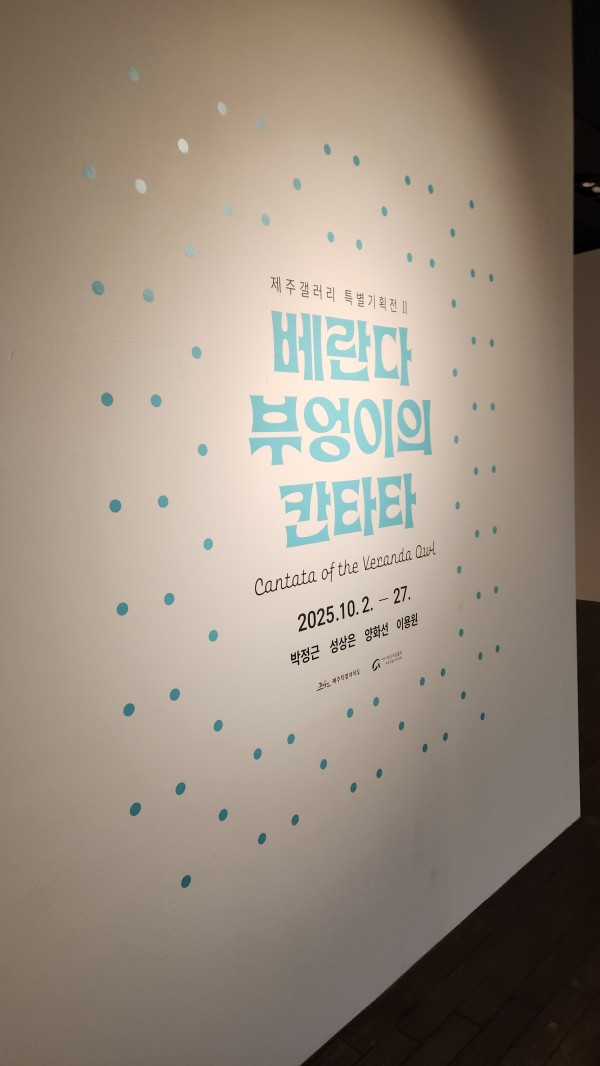
By documenting the traces of time etched into walls and merging them with images of nature, they create works that speak to resilience, continuity, and rebirth.
Many of the animal motifs—symbols of life and longevity—underscore this connection.
Beyond aesthetics, the exhibition invites viewers to reflect on what we overlook in daily life.
The curatorial team’s goal was to inspire people to find meaning in the forgotten and beauty in decay, turning ordinary surfaces into portals for imagination.
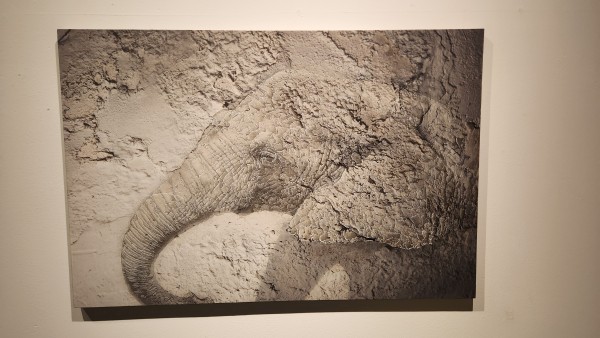
Coordinator Shin Sun-ho also discusses broader cultural aims.
He stresses the importance of supporting Jeju-based artists, who work within a unique creative environment distinct from Seoul’s centralized art scene.
Shin highlights how past exhibitions addressing historical subjects such as the Jeju 4.3 Uprising have deepened both artistic and communal understanding.
In his view, art should transcend mere commerce: “Instead of focusing solely on sales, art should become a form of ‘aspirational consumption’—a source of emotional nourishment in daily life,” he explains.
He envisions art as a medium of communication, capable of offering spiritual comfort and social dialogue rather than serving only as collectible objects.
Addressing generational and social divides, Shin notes that exhibitions can act as cultural forums for discussion and healing. Using the term “Young Forty” (영포티) as an example of shifting generational identity,
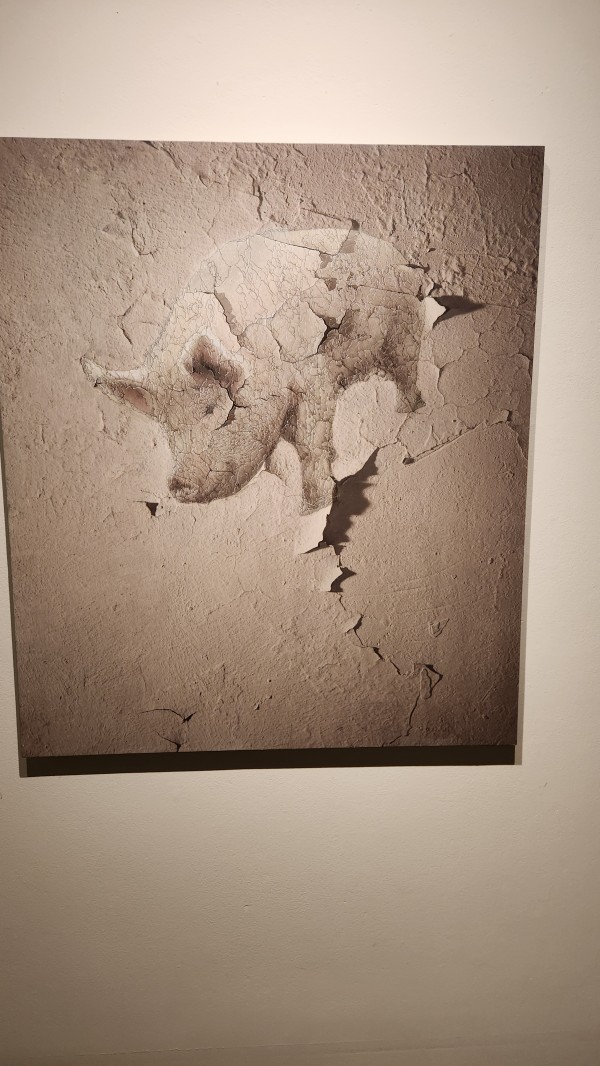
he points out how social labels are becoming part of everyday language—and how art can help dissolve the barriers between age groups.
From a curatorial standpoint, Shin believes in capturing the social meanings behind trends rather than simply following them.
If generational disconnection is a societal issue, he argues, exhibitions should do more than depict it—they should mediate understanding and explore solutions, transforming the gallery into a space for cultural conversation and reconciliation.
